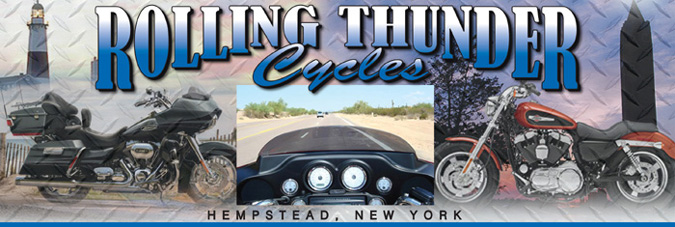
|
|
|
|
|
|
|
|
|
|
|
|
|
|
|
|
|
|
|
|
|
|
|
|
|
|
|
|
|
|
|
|
|
|
Search by Keyword

While cold temperatures and cloudy skies can try to put a damper on you riding, there's a lot to be said for experiencing the changing landscapes of fall and winter on two wheels. We don't advocate riding in truly treacherous conditions (ice and snow, for example), but with some comon sense, you can stretch your riding season out considerably, even living where we are, in the north east.
Here are three simple steps to help dull the sting of riding in colder temperatures.Step 1: Preserve body heat
Think Layers: What keeps you warm isn't just the material in the clothes you wear. It's also the air trapped inside. That's one reason why a few lighter layers are better than one heavy one for colder weather riding. Plus, layered clothing allows you to fine-tune your comfort level by adding or subtracting a layer in variable autumn temperatures
Build as Base: The stuff you wear right next to your skin is called a base layer, and it can be incredibly important in staying warm. Old-School cotton provides warmth, but if you sweat, it'll stay damp and you'll get chilled. Synthetics like polyester wick away perspiration to give you more consistent warmth, and they adapt better when temperatures goes up.
Adapt to Conditions: Lots of riding jackets offer liners you can zip in when the weather gets chilly. Some are just thermal vests, which can leave your arms unprotected from the cold, while others have an entire inner jacket for maximum warmth. Remember, though, that this is likely to be the layer you'll want to shed first when the sun gets high in the sky. So plan space to carry in on the bike.
Get Dressed Inside: If it's chilly in your garage or the parking lot of your hotel, be sure to put most of your gear on indoors. there's a fine balance here- you want to retain the indoor heat, but you don't want to seal everything up and start sweating. You might want to zip that last zipper just as you're headed out the door.
Have a Glove Strategy: Some riders carry as many as four pairs of gloves on a cold-weather ride, with heavy gloves, lighter gloves, gloves liners and rain gloves. There's good reason to take this element seriously: Your hands are the most important interface between you and your bike. When they get cold, your ability to operate your bike safely is compromised.
Cover Your Head: We're talking about wearing a balaclava- a thin head-and-face covering that allows only your eyes to show. Sure, you look funny, but you'll be warmer. Just make sure the one you buy is thin enough so you can fit it under your helmet.
Wear a full-face Helmet: It may seem obvious, but a full-face helmet can keep you much warmer than as open-face lid. The trade-off is that you risk fogging your face shield so coat it with anti-fog, keep it cracked while moving and be ready to open it wide when you stop.
Step 2: Block The Wind
Stop the Cold! Make sure your outermost layer is windproof. Leather and high-tech fabrics are pretty good at this. Really cold, put on your rain suit. I doesn't add warmth, but can be remarkably effective in keeping the chill out.
Watch Where Clothing Overlaps: When the wind is blowing at 65 mph, it will find its way through any chinks in your cold-weather armor. Take the time to pull your gloves completely over your jacket sleeves and cinch them down tight, Weave upper and lower layers over each other at the waist, pants over base-layer top, fleece pullover over pants, etc. Make sure there's no gap between your pants and boots
Don't Stick Your Neck Out: when it comes to heat loss, one of the most vulnerable areas is your neck, even a simple bandana can help,
Don't Forget the Bike: You don't have to wear all your wind protection. A fairing or detachable windshield can make a tremendous difference in cooler weather. If you have front engine guards, but no lower fairing, there are snap-on wind breakers for keeping your feet and legs warm.
Step 3: Add Heat:
Hot Bikes: You can outfit your bike with electrics. Electric Grip warmers will heat any handlebar or grip. And you don't have to remember to bring them. Warm fingers handle the throttle, brake and clutch more safely then stiff frozen digits. Heated seats are also available standard on some model motorcycles. Check with us to see if one is available for your bike
Going Electric: Electric clothing is the way to go! Jacket liners, vests, pants, chaps, socks and gloves are all investments you will appreciate the very next time you ride. The newest designs can generate enough heat for extended sub-freezing temperatures.
Rolling Thunder Cycles Inc. is not affiliated with Harley-Davidson®
All logos, brands, images and trademarks are the property of their respective trademark holders.


